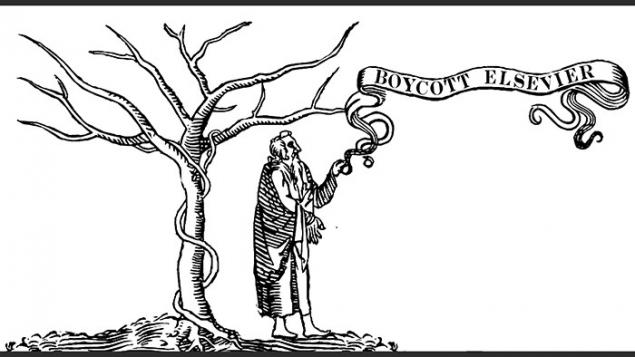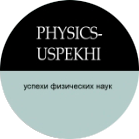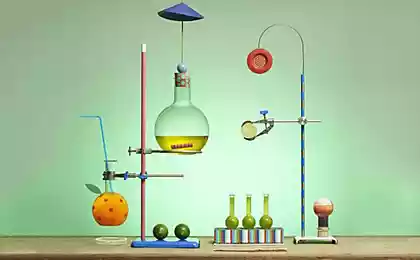599
Knowledge for all: 5 free scientific journals
Garage lab network experiments modern science is becoming more accessible to the average person. More surprising that the article of leading scientific journals are still paid for readers. But why scientists are still putting up with this situation?
Through the family of Elzeviro, printers of Leiden University, was virtually all European science XVI — early XVII century. Dissertations, monographs, scientific works. It all came out under the famous emblem of Elzeviro with sage and sprawling tree, which is now familiar to every scientist. However, the kind of Elzeviro was interrupted in 1712, and the largest modern publishing of scientific literature of Elsevier at its creation in 1880 was just awarded a time-tested brand of Dutch printers.

© Ben Smith
Today in journals Elsevier goes about a quarter of all scientific articles. Download any hypothetically can each only need to pay 20-50 $. The amount of tangible — so the scientists for their work uses articles of journals included in the subscription native organization (Institute, University, enterprise) or ask texts from colleagues. But the yearly subscription is too costly, and therefore impressive revenue Elsevier (1090 million euros in 2011) and other scientific publishers should not be very surprising. The work of the creators of the articles, and reviewers are not paid, moreover, authors often have to pay the publisher for publication.
Why should scientists get involved in this game? Articles in good scientific journals is a way up the career ladder for researchers: they can get a promotion, win a grant, to dislodge the leadership of the new equipment or just to show off in front of friends and journalists. So always be kind and accept the rules of the game.
The scientific rebellion21 Jan 2012 English mathematician Timothy Gowers, laureate of the fields (the equivalent of the Nobel prize for mathematicians), through his blog, urged his colleagues to boycott Elsevier journals. The reasons, in his words, is simple: the high cost of subscriptions, the imposition of unnecessary services, and support for publishing draft laws SOPA and PIPA restricting Internet freedom. The call of mathematics was supported by about 14,500 scientists who signed the petition on the website "The cost of knowledge", but the publisher and did not get significant concessions.
9 Dec 2013 — new protest and again the star scholar. Randy Schekman, fresh winner of the Nobel prize in physiology and medicine, publishes a note in the pages of The Guardian, where forswear never to publish his research laboratory in three major journals — Nature, Science and Cell. Resent his policy of editorial staff of magazines that only accept "interesting to the public" article, thus forming the scientific mainstream and ignoring the truly bold and unexpected work. These are just two examples, but who knows how many less famous scientists secretly supported their decision? Or ready to support as soon as a real alternative to the giant scientific publishers?
However, the solution to this problem is beginning to Mature long before 2012 — first open scientific e-journals, articles which may without limitation be downloaded by anyone, began to appear in zero. Some take money (to pay web designers/proofreaders/designers or even reviewers) authors, and others are funded by sponsors from leading organizations (institutes, libraries, foundations). Some posted articles in the General access immediately and others only after some time or even only allow authors to republish their work to third-party resources.

In any case, the main principle of open scientific journals remains the same — the reader doesn't have to pay for the materials. This approach is slowly starting to change the very tradition of writing scientific articles. Because now publishers can focus on the number of downloads or reposts in social networks. And scientists certainly more interesting to write for the whole world, not for several tens-hundreds of their peers.
5 open scientific journals, worthy of attention

Issued in December 2006. One of seven magazines published by the Public Library of Science, whose peer-reviewed publications spetsializiruyutsya mainly on biological Sciences. The journal PLoS ONE is the most broad in topics among them.
Comes only in the online version, and therefore is not limited in volume. At the end of 2013 was the largest peer-reviewed scientific journal in the world. Policy edition is very simple — the editorial Board accepts for consideration all articles, regardless of subject matter. Fundamentally important, only the accuracy of the methodology and the statistical reliability of the data.
The unexpected and bold of a research article PLoS ONE has won a special love scientific journalists (for example, many winners of the IG Nobel prize have published their research in PLoS ONE). However, PLoS ONE enjoys greater respect in the scientific environment.
Publication in the journal are paid. Authors from most countries of the world have to pay for it 1350 $. There are two list of countries for which discounts are available is the publication for them is worth 500 $ or even for free.

Almost an exact copy of PLoS ONE, published in 2011 the most authoritative in the world of science publishing group science Nature. With precision even match the fee provided for authors. Immediately after the appearance of the journal, editorial Board PLoS ONE even sent Nature a letter congratulating publishing group with entry into the world of open magazines.

Amazingly, one of the most influential domestic academic journals is totally open. With the Russian business magazines generally bad, but UFN traditionally read, quoted and appreciated by scientists worldwide. So, in the pages of this journal in the distant 1967 appeared the first theoretical prediction of places of worship for modern physics, metamaterials, i.e. materials with negative index of refraction.
Magazine is published since 1918. Now publishes mainly review papers from different fields of physics, for writing which, contrary to the traditions of the world even pays its authors.

The magazine is a volunteer project almost two hundred leading experts in Biomedicine and life Sciences from all over the world. Authors there is no Board (in part, the expenses edition cover sponsorship money native institutions and large scientific collaborations such as the max Planck society).
Editorial Board is headed by the same "rebel", the Nobel prize winner Randy Schekman. There is a log with the end of 2012, for the year 2013 it has published 287 articles. Special attention, according to the editorial, is given to works of young scientists and the search for new approaches to the presentation and discussion of scientific information.

Formally, the server arXiv.org is not a peer-reviewed scientific journal. But not mentioned in this list would be almost a crime. 21 years ago arXiv.org was founded in the Los Alamos national laboratory, USA. Now he supported with the money of Cornell University, is a giant digital archive as Preprint (version of articles that scholars still only send for review to the journal), and final versions of scientific publications (it can accommodate articles of those conditionally-open journals, which only allow to publish the work again on third-party servers).
Formally, the article on arXiv.org a scientific publication is not considered, but some of it does not stop. So, Grigory Perelman published his proof of the Poincare conjecture here. In addition, publication on arXiv.org seen and appreciated by colleagues, often helps scientists to bring to mind your text before submitting in a traditional scientific journal.
Of course, all about open academic journals is impossible to write. So we finish the text with links to two useful list. In the first magazines of the different scientific fields, and the second logs of one of the pioneers of the region, publisher of BioMed Central.
Unverified studies, However, have open scientific journals and disadvantages. First, it is their number — more than 8 thousand even according to conservative estimates. Any researcher can just drown in this flow of information. And secondly, their quality is often in the flow of untrusted data, and repeatable experiments or even outright deceit and should not take.
Fellow at Harvard University John Bohanon even put a kind of experiment, the results of which were published in October 2013 in the pages of Science. John wrote a completely fictional work about the discovery of the effects of selected lichen substances on the growth of cancer cells and sent it to the different variations in the wording of 304 English language journals. Each of them contained serious methodological errors, but only the editors of the 34 journals had questions on the scientific content of the articles (here you can see an interactive map with the results of the experiment. Interestingly, many magazines with the words "American" or "European" and published in India, China or Africa).
A similar experiment with Russian magazine in 2008, spent together with my colleagues in the newspaper "Troitsky variant" bioinformatic Mikhail Gelfand. Then the "Journal of scientific publications graduate and doctoral students" published sent them an article entitled "Rooter: algorithm typical unification of access points and redundancy", which was simply automatic translation is absolutely meaningless and is generated with a similar purpose (to check the reliability of peer review journals) articles in English "Rooter: A Methodology for the Typical Unification of Access Points and Redundancy".
What is not evidence of the failure of the "open" approach to publishing scientific journals? So, for the money of the authors the reviewers are willing to overlook any nonsense — publishers will publish, and the reader is again left in the cold? But do not forget that the experiment of John Barahona were not clean in all respects. After all, the fraudulent article for comparison, it was possible to send in the usual peer-reviewed journals. And was published Bonahon on the pages of a real flagship traditional scholarly publishers. So the struggle of scientists for open scientific knowledge has not yet ended. And is unlikely to end until well-established and almost medieval industry of scientific articles do not learn to play by the rules of the Internet... posted .
P. S. And remember, only by changing their consumption — together we change the world! ©
Source: theoryandpractice.ru
Through the family of Elzeviro, printers of Leiden University, was virtually all European science XVI — early XVII century. Dissertations, monographs, scientific works. It all came out under the famous emblem of Elzeviro with sage and sprawling tree, which is now familiar to every scientist. However, the kind of Elzeviro was interrupted in 1712, and the largest modern publishing of scientific literature of Elsevier at its creation in 1880 was just awarded a time-tested brand of Dutch printers.

© Ben Smith
Today in journals Elsevier goes about a quarter of all scientific articles. Download any hypothetically can each only need to pay 20-50 $. The amount of tangible — so the scientists for their work uses articles of journals included in the subscription native organization (Institute, University, enterprise) or ask texts from colleagues. But the yearly subscription is too costly, and therefore impressive revenue Elsevier (1090 million euros in 2011) and other scientific publishers should not be very surprising. The work of the creators of the articles, and reviewers are not paid, moreover, authors often have to pay the publisher for publication.
Why should scientists get involved in this game? Articles in good scientific journals is a way up the career ladder for researchers: they can get a promotion, win a grant, to dislodge the leadership of the new equipment or just to show off in front of friends and journalists. So always be kind and accept the rules of the game.
The scientific rebellion21 Jan 2012 English mathematician Timothy Gowers, laureate of the fields (the equivalent of the Nobel prize for mathematicians), through his blog, urged his colleagues to boycott Elsevier journals. The reasons, in his words, is simple: the high cost of subscriptions, the imposition of unnecessary services, and support for publishing draft laws SOPA and PIPA restricting Internet freedom. The call of mathematics was supported by about 14,500 scientists who signed the petition on the website "The cost of knowledge", but the publisher and did not get significant concessions.
9 Dec 2013 — new protest and again the star scholar. Randy Schekman, fresh winner of the Nobel prize in physiology and medicine, publishes a note in the pages of The Guardian, where forswear never to publish his research laboratory in three major journals — Nature, Science and Cell. Resent his policy of editorial staff of magazines that only accept "interesting to the public" article, thus forming the scientific mainstream and ignoring the truly bold and unexpected work. These are just two examples, but who knows how many less famous scientists secretly supported their decision? Or ready to support as soon as a real alternative to the giant scientific publishers?
However, the solution to this problem is beginning to Mature long before 2012 — first open scientific e-journals, articles which may without limitation be downloaded by anyone, began to appear in zero. Some take money (to pay web designers/proofreaders/designers or even reviewers) authors, and others are funded by sponsors from leading organizations (institutes, libraries, foundations). Some posted articles in the General access immediately and others only after some time or even only allow authors to republish their work to third-party resources.

In any case, the main principle of open scientific journals remains the same — the reader doesn't have to pay for the materials. This approach is slowly starting to change the very tradition of writing scientific articles. Because now publishers can focus on the number of downloads or reposts in social networks. And scientists certainly more interesting to write for the whole world, not for several tens-hundreds of their peers.
5 open scientific journals, worthy of attention

Issued in December 2006. One of seven magazines published by the Public Library of Science, whose peer-reviewed publications spetsializiruyutsya mainly on biological Sciences. The journal PLoS ONE is the most broad in topics among them.
Comes only in the online version, and therefore is not limited in volume. At the end of 2013 was the largest peer-reviewed scientific journal in the world. Policy edition is very simple — the editorial Board accepts for consideration all articles, regardless of subject matter. Fundamentally important, only the accuracy of the methodology and the statistical reliability of the data.
The unexpected and bold of a research article PLoS ONE has won a special love scientific journalists (for example, many winners of the IG Nobel prize have published their research in PLoS ONE). However, PLoS ONE enjoys greater respect in the scientific environment.
Publication in the journal are paid. Authors from most countries of the world have to pay for it 1350 $. There are two list of countries for which discounts are available is the publication for them is worth 500 $ or even for free.

Almost an exact copy of PLoS ONE, published in 2011 the most authoritative in the world of science publishing group science Nature. With precision even match the fee provided for authors. Immediately after the appearance of the journal, editorial Board PLoS ONE even sent Nature a letter congratulating publishing group with entry into the world of open magazines.

Amazingly, one of the most influential domestic academic journals is totally open. With the Russian business magazines generally bad, but UFN traditionally read, quoted and appreciated by scientists worldwide. So, in the pages of this journal in the distant 1967 appeared the first theoretical prediction of places of worship for modern physics, metamaterials, i.e. materials with negative index of refraction.
Magazine is published since 1918. Now publishes mainly review papers from different fields of physics, for writing which, contrary to the traditions of the world even pays its authors.

The magazine is a volunteer project almost two hundred leading experts in Biomedicine and life Sciences from all over the world. Authors there is no Board (in part, the expenses edition cover sponsorship money native institutions and large scientific collaborations such as the max Planck society).
Editorial Board is headed by the same "rebel", the Nobel prize winner Randy Schekman. There is a log with the end of 2012, for the year 2013 it has published 287 articles. Special attention, according to the editorial, is given to works of young scientists and the search for new approaches to the presentation and discussion of scientific information.

Formally, the server arXiv.org is not a peer-reviewed scientific journal. But not mentioned in this list would be almost a crime. 21 years ago arXiv.org was founded in the Los Alamos national laboratory, USA. Now he supported with the money of Cornell University, is a giant digital archive as Preprint (version of articles that scholars still only send for review to the journal), and final versions of scientific publications (it can accommodate articles of those conditionally-open journals, which only allow to publish the work again on third-party servers).
Formally, the article on arXiv.org a scientific publication is not considered, but some of it does not stop. So, Grigory Perelman published his proof of the Poincare conjecture here. In addition, publication on arXiv.org seen and appreciated by colleagues, often helps scientists to bring to mind your text before submitting in a traditional scientific journal.
Of course, all about open academic journals is impossible to write. So we finish the text with links to two useful list. In the first magazines of the different scientific fields, and the second logs of one of the pioneers of the region, publisher of BioMed Central.
Unverified studies, However, have open scientific journals and disadvantages. First, it is their number — more than 8 thousand even according to conservative estimates. Any researcher can just drown in this flow of information. And secondly, their quality is often in the flow of untrusted data, and repeatable experiments or even outright deceit and should not take.
Fellow at Harvard University John Bohanon even put a kind of experiment, the results of which were published in October 2013 in the pages of Science. John wrote a completely fictional work about the discovery of the effects of selected lichen substances on the growth of cancer cells and sent it to the different variations in the wording of 304 English language journals. Each of them contained serious methodological errors, but only the editors of the 34 journals had questions on the scientific content of the articles (here you can see an interactive map with the results of the experiment. Interestingly, many magazines with the words "American" or "European" and published in India, China or Africa).
A similar experiment with Russian magazine in 2008, spent together with my colleagues in the newspaper "Troitsky variant" bioinformatic Mikhail Gelfand. Then the "Journal of scientific publications graduate and doctoral students" published sent them an article entitled "Rooter: algorithm typical unification of access points and redundancy", which was simply automatic translation is absolutely meaningless and is generated with a similar purpose (to check the reliability of peer review journals) articles in English "Rooter: A Methodology for the Typical Unification of Access Points and Redundancy".
What is not evidence of the failure of the "open" approach to publishing scientific journals? So, for the money of the authors the reviewers are willing to overlook any nonsense — publishers will publish, and the reader is again left in the cold? But do not forget that the experiment of John Barahona were not clean in all respects. After all, the fraudulent article for comparison, it was possible to send in the usual peer-reviewed journals. And was published Bonahon on the pages of a real flagship traditional scholarly publishers. So the struggle of scientists for open scientific knowledge has not yet ended. And is unlikely to end until well-established and almost medieval industry of scientific articles do not learn to play by the rules of the Internet... posted .
P. S. And remember, only by changing their consumption — together we change the world! ©
Source: theoryandpractice.ru
Gender differences: Asya Kazantseva about male and female brain
The amazing therapeutic effect of zucchini























